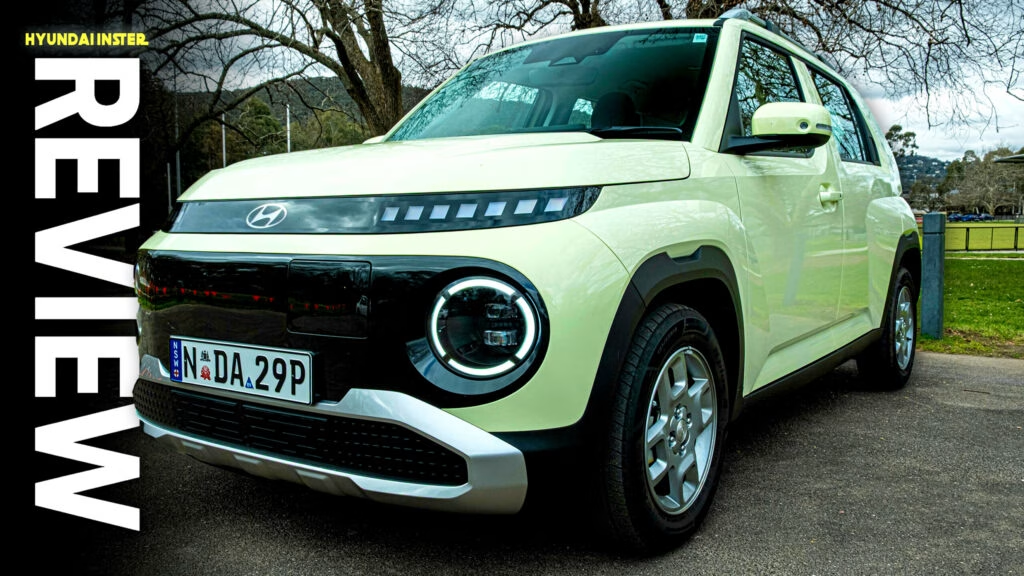Is the Hyundai Inster Really the Right City EV for You?
What Makes the Hyundai Inster Stand Out in a Crowded EV Market?
Hyundai has been on a roll with electric vehicles, but the Inster is a bit of an outlier in its lineup. Unlike the Ioniq 5 or Kia EV6, which ride on dedicated EV platforms, the Inster is based on the Hyundai Casper—a small city car from South Korea—using the more basic K1 platform. That means it’s not just another cookie-cutter EV, but rather a clever adaptation of a proven city runabout.
The Inster is Hyundai’s smallest electric offering, aimed squarely at rivals like the BYD Dolphin, GWM Ora, MG 4, and the new Renault 5. This is a fiercely competitive segment, especially with Chinese brands pushing hard on value and features. So, does Hyundai’s baby EV have what it takes to keep up?
How Much Does the Inster Cost—and Is It Worth the Price?
Let’s talk numbers. In Australia, the Inster Standard Range starts at AU$39,000 (about US$26,000), but after taxes and fees, you’re looking at closer to AU$43,646 (US$29,000). The Extended Range bumps up to AU$42,500 (US$28,300), and the adventure-themed Inster Cross starts at AU$45,000 (US$30,000).
Here’s where things get tricky. The Inster is pricier than most of its direct competitors. It’s AU$6,000 more than the GWM Ora, AU$3,000 more than the MG 4, and a whopping AU$9,000 more than the BYD Dolphin. Even the Fiat 500e, which started out much more expensive, is now cheaper after a price cut. For a car this size, that’s a tough pill to swallow.
So what do you actually get? The base model packs a 42 kWh battery and a 95 hp (71 kW) motor, with a WLTP range of 327 km (203 miles). The Extended Range model bumps the battery to 49 kWh and the range to 360 km (224 miles). Both versions use a single front-mounted motor, and the flagship gets a slight power boost to 113 hp (84.5 kW).
Is the Inster’s Interior Really as Spacious as Hyundai Claims?
You might expect a car this small to feel cramped, but the Inster pulls off a neat trick. Thanks to its tall roof and clever packaging, it feels surprisingly roomy inside. Even taller drivers (think 6’2” and up) will find ample headroom and decent legroom up front.
The dashboard features two 10.25-inch screens—one for instruments, one for infotainment. They’re not the latest tech, but the physical climate controls (with satisfying rocker switches) are a welcome touch. There’s a wireless phone charger and a flat floor, but no center console between the seats—just cupholders and a fold-down armrest, reminiscent of older city cars.
Materials are a mixed bag. Hard plastics dominate, which feels a bit cheap given the price. Still, the rear seats are a highlight: they slide fore and aft, offering nearly five inches of legroom when pushed back. That’s on par with much larger cars like the Ioniq 5. The seats also fold flat, and even the front passenger seat can fold down for extra cargo space. Cargo capacity is decent at 280 liters (9.8 cubic feet) with the seats up, expanding to 1,059 liters (37.4 cubic feet) when folded.
How Does the Inster Drive in Real-World Conditions?
The Inster may look like a crossover, but it drives like a nimble city car. The high seating position and big windows make for excellent visibility, and the light, precise steering is perfect for tight urban streets. At just over 1,300 kg (2,877 lbs), it’s light for an EV, and the tight 10.6-meter turning circle makes U-turns and parking a breeze.
Hyundai’s paddle shifters let you adjust regenerative braking on the fly, including a true one-pedal driving mode. Most drivers will find this intuitive and helpful, especially in stop-and-go traffic.
Efficiency is solid but not groundbreaking. Hyundai claims 14.3 kWh/100 km for the Standard Range, but real-world driving can beat that—13.9 kWh/100 km is achievable. For context, the larger Kia Niro EV managed 13.5 kWh/100 km in similar conditions, so the Inster isn’t setting new records here.
Charging speeds are another area where the Inster lags behind. With a peak of 120 kW, a 10-80% charge takes about 30 minutes—longer than you’d expect for a small battery. On a 50 kW charger, it’s nearly an hour. At home, you can plug into a standard outlet, which is convenient but slow.
Is the Inster’s Ride Comfortable Enough for Daily Use?
The Inster’s ride is a bit firmer than you might expect, likely due to the weight of the battery. It’s not uncomfortable, but it doesn’t quite have the plushness of some ICE-powered crossovers. For daily commuting, it’s perfectly acceptable, though drivers who prioritize a soft ride might wish for a little more give.
How Does the Inster Compare to Its Rivals on Value?
Here’s the rub: the Inster is more expensive than nearly all its direct competitors, and even pricier than Hyundai’s own Venue, a larger ICE-powered crossover. That makes it a tough sell for buyers focused on value. The Inster’s strengths are its clever design, city-friendly size, and genuinely spacious interior. But if you’re simply looking for the most car for your money, there are better deals out there.
Who Should Consider the Hyundai Inster?
The Inster is best suited for buyers who are set on going electric and want something quirky, practical, and easy to drive in the city. If you’re smitten by its design and can live with the limited range and higher price, it’s a fun, capable little EV. But if you’re shopping with your wallet, the competition is fierce—and more affordable.
The big takeaway? Choosing an EV like the Hyundai Inster isn’t about perfection—it’s about smarter adjustments. Start with one change this week, and you’ll likely spot the difference by month’s end.

